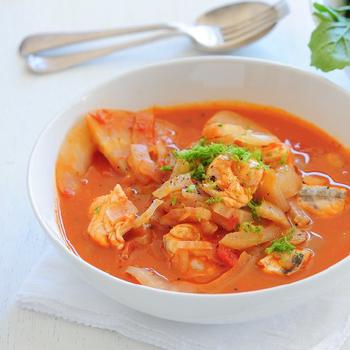Philadelphia, the City of Brotherly Love, is renowned for its rich history, diverse culture, and, of course, its vibrant food scene. Among the many dishes that define the city’s culinary heritage, the Philadelphia Pepper Pot stands out as a hearty symbol of resilience and community spirit.
A Historical Context
The origins of Philadelphia Pepper Pot date back to the American Revolutionary War. The dish was created out of necessity, as it was initially prepared by soldiers who needed to stretch limited rations while keeping their meals flavorful and satisfying. The recipe, simple yet robust, typically featured a base of beef tripe, a variety of spices, and peppers, making it a nutritious and fortifying meal during the harsh winter months.
During the cold winters, the city’s residents turned to this soup for sustenance. It became a staple among the local populace, particularly during the Revolutionary War, when food scarcity was a pressing concern. The hearty soup was both a source of warmth and a way to make use of available ingredients. As the city evolved, so did the pepper pot, becoming a beloved comfort food that transcended social classes.
Ingredients and Preparation
While there are many variations of today food recipes of Philadelphia Pepper Pot, the core ingredients remain largely the same. Traditional recipes call for:
- Beef tripe: This ingredient provides a rich base for the soup, often simmered for hours to achieve tenderness.
- Vegetables: Common additions include onions, celery, and bell peppers, which enhance the soup’s flavor.
- Spices: Black pepper, allspice, and sometimes even hot pepper are crucial to delivering the dish’s signature kick.
- Broth: A hearty beef broth serves as the foundation, simmered with the ingredients to create a depth of flavor.
- The preparation involves slow cooking the tripe until it is tender, then adding the vegetables and spices to simmer together. The result is a fragrant and spicy soup that warms the soul and nourishes the body.
Modern-Day Philadelphia Pepper Pot
Today, the Philadelphia Pepper Pot is not only a relic of the past but also a cherished dish in contemporary Philadelphia. Many local restaurants, diners, and food festivals celebrate this culinary heritage, showcasing their own interpretations while honoring traditional methods. It is commonly served with crusty bread or a side of rice, making it a complete meal that encapsulates the spirit of community dining.
In addition to its comfort food status, the pepper pot has found its way into the hearts of food enthusiasts beyond Philadelphia. Its rich history and deep flavors make it an interesting topic for today food recipes exploration. Food historians and chefs alike have been revisiting the recipe, experimenting with new ingredients while paying homage to its humble beginnings.
The Philadelphia Pepper Pot is more than just a dish; it is a testament to the resilience and creativity of a community that thrived amidst adversity. It embodies the essence of Philadelphia’s rich culinary landscape, bridging the gap between history and modern gastronomy. Whether enjoyed in a bustling restaurant or prepared at home, the pepper pot continues to warm hearts and fill bellies, ensuring that its legacy endures for generations to come.
